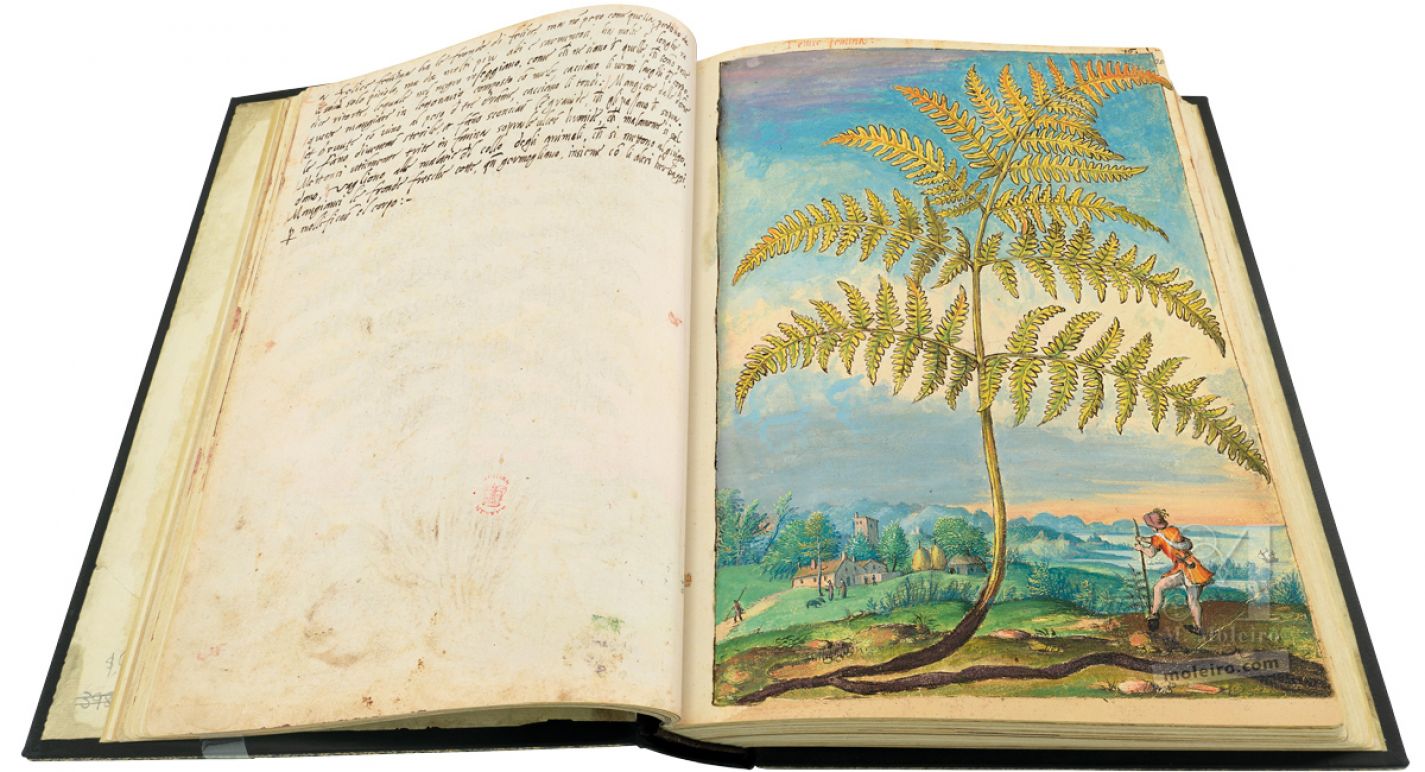Bracken has leaves like the male fern but, unlike those, they do not sprout from a single stalk but from many, taller and more twiggy. It has many roots, long and twisted, black in colour tending towards red, with some indeed completely red. These, eaten in an electuary prepared with honey, expel flatworms from the body; three drams drunk with wine expel roundworms. They cause women who eat them to become sterile and cause pregnant women who tread on them to miscarry. Pounded in flour and applied to wet wounds that have difficulty in closing, they will help the healing. They are used to treat the abrasions on the necks of yoked animals. The fresh leaves of this plant when newly sprouted are eaten cooked together with other herbs to empty the bowel. (f. 19v)
This plant grows throughout Europe and is cosmopolitan. It invades large areas of undergrowth, more often than not on siliceous soil. Its fronds are deciduous and sprout from a black rhizome. The specific name aquilinum and its other common name eagle fern refer to the fact that a figure resembling a double eagle – the emblem of the House of Austria – can be seen in a cross-section of the rhizome. In the colder regions of northern Europe the rhizome was used to brew beer, and elsewhere it was ground to make fern bread.
Ramón Morales Valverde
Real Jardín Botánico de Madrid
(Extract from the commentary volume of Mattioli's Dioscorides illustrated by Cibo)
